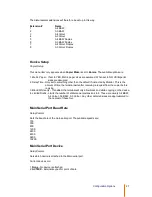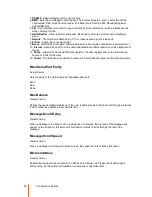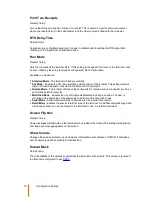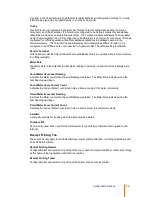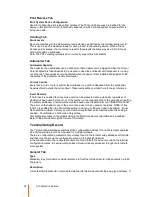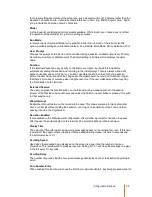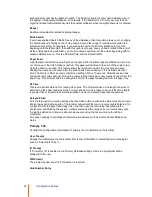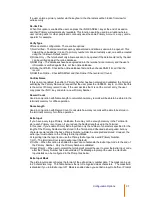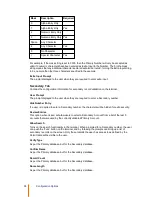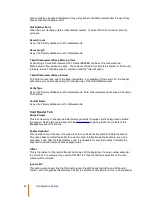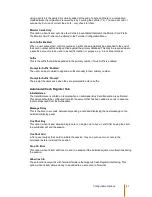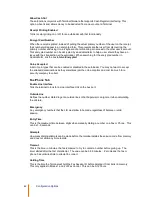
37
Configuration Options
If a user enters a primary number via the keyboard, the characters will be hidden from view for
extra security.
Re-Use File
When this option is enabled the user can press the <NO\CANCEL> key at the end of a session
and their Primary will automatically revalidate. This function would be used in a situation where a
user is doing work for other people and continually uses the same Primary Account, a copy centre
operator for example.
Verify Type
Offline operation configuration. There are five options:
1) Not Verified – The terminal will accept any data entered and allow a session to be opened. This
data will be unloaded as it is, so if a primary number etc doesn’t actually exist, one will be created
using the !Unknown Default record.
2) Online Only – The terminal will only allow a session to be opened if the details entered by the user
can be verified against the online database.
3) RAM Only – The databases have been uploaded into the terminal’s local memory and the user’s
information is verified against this, not the online database.
4) Online then RAM – Checks the online database first and then checks RAM if it can’t find the
record.
5) RAM then Online – Checks RAM first and then Online if the record isn’t found.
Confirm Name
If this option is enabled, then after a Primary Number has been entered and validated, the Terminal
will display the Primary Name and request that the user press the <ENTER> key to confirm that this
is the correct Primary record to use. If the user decides that it is not the correct entry, the user
may press the <NO> key and enter a new Primary Number.
Record Count
Used in conjunction with Name Length to calculate how many records will be able to be stored in the
terminal’s memory for offline operation.
Name Length
Used in conjunction with Record Count to calculate how many records will be able to be stored in
the terminal’s memory for offline operation.
Extra Input
If you have a very large Primary database, there may not be enough memory in the Terminal to
store each Primary record, even if you reduce the Number length used in the Terminal.
In this case, if you enable Primary Extra Input then only the number of characters specified for the
length of the Primary Number will be stored in the Terminal and Checked as being valid, but any
characters entered after the base Primary Number will also be accepted and stored. However, the
extra input must adhere to the Primary Extra Input Mask.
At reporting time the reports can use the Primary Extra Input as a valid Primary Number.
1) Off – The terminal will not require extra input (Default)
2) Suffix – When this option is enabled the user can concatenate the Extra Input code to the end of
the Primary Number. Only the Primary Number is validated.
3) User Prompt – When set to prompt the terminal will prompt the user to enter the Extra Input code
after the Primary Number has been validated. The Message to prompt the user to enter Extra
Input details can be configured in the Prompt box below.
Extra Input Mask
The extra input mask configures the format of the extra primary number data. The mask can be up
to 20 characters long. The Table below is the list of recognized mask characters. The mask field
is disabled if you turn Extra input off. Mask is enabled when you set Extra input to Suffix or Prompt.
Summary of Contents for MB206
Page 1: ...MB206 Terminal Reference Guide From Version 6 58 02 www monitorbm com ...
Page 70: ...Version 6 Terminal Menu System Options 64 3 The terminal then resolves it to an IP address ...
Page 73: ...67 Terminal Interface Cables B W Copier Type 2 ACT812 Retail Handset ...
Page 74: ...Terminal Interface Cables 68 TMSR Barcode Mag Card Reader ...





